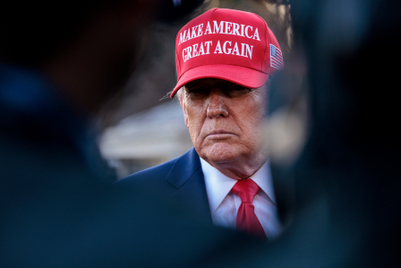
I accidentally logged into a colleague’s YouTube account recently. Instead of my usual recommendations, there was a world of music I’d never heard. It got me thinking…
Today, consumers see content constrained by filter bubbles, echo chambers of information determined by optimised algorithms and machine learning. It’s not surprising – as marketers, we’ve pursued an understanding of customers’ tastes that enables us to serve only tailored, relevant content.
For brands, media owners and publishers, this represents a responsibility in terms of the validity and balance of what we produce. It’s also an opportunity to cost-effectively disseminate content through a greater understanding of what consumers value. The Trump win encompasses examples of both.
Responsibility
The filter bubble has got people talking. Some suggest that it presents content gatekeepers with serious responsibilities:
- Content validity. Misleading information or ‘fake news’, called out during the Trump campaign, can engage influencers and subsequently proliferate within their network bubble. Publishers are under pressure to address this; Facebook recently released its anti-fake news technology.
- Balance. After Brexit, people complained that the echo chamber served only content aligning to their stance, despite actively searching for the opposite. Some argue media companies have an obligation to avoid this, and to inspire open-mindedness and balanced debate.
The tension between balance and relevance complicates how we approach the filter bubble. Brands drive affinity and engagement through serving consumers what they want and like. Publishers serve tailored content to encourage return visits. And customers want relevant information. These principles underpin how content is created and distributed.
Our pursuit for relevance won’t subside. Driving a more balanced approach to how differing opinions are served won’t destroy the filter bubble – it will just reduce the impact. Therefore, it continues to be something marketers can take advantage of.
Opportunity

By piercing the filter bubble, marketers can effectively engage audiences using limited resources. Donald Trump’s team used this to distribute the messages of his campaign platform.
Jared Kushner, Trump’s son-in-law, ran the Trump campaign facing an uphill battle: Trump had half the campaign funding of Clinton. Kushner would need to work smarter to secure victory.
Despite limited technical knowledge, he knew that interpreting and responding to data was the best approach. He understood that the value perceived in Trump’s campaign platform by voters differed significantly across geographies and socio-economics.
He focused on identifying which messages were the right ones to serve, to whom, and where. Applying machine learning to display advertising, Kushner tested value propositions throughout swing states with more than 100,000 unique variations daily.
Performance was measured ruthlessly. Under-performing ads were killed in minutes, more successful ones were scaled. Through on-point messaging, content could penetrate and echo around the filter bubble and be distributed by Republican influencers to their networks.
It didn’t stop at online. Best performing messages across different geographies informed the offline campaign too. Television advertising was tweaked to incorporate propositions that resonated in each market. Speeches were changed to ensure the message was perfectly relevant.
The result – an unexpected win for the Trump team, on a shoestring budget.
Commercial application
The filter bubble applies equally for brands. In December 2016, Nissan released two very different advertisements for the Nissan Micra, aimed at two target markets:
1) For those who appreciate the style and craft of the car, a virtual reality artistic recreation by a talented artist.
2) For those wanting humour and edginess, a vlog by Swedish web-based comedian PewDiePie.
In a small space of time, both received significant views. Comments on the first video focussed on the artist’s talent and the future for VR. Posts about the second embraced Nissan’s sense of humour and choice of brand advocate. Each video found a different path, creating an echo effect in multiple locations.
Implication for marketers
How might you replicate this success? You need to understand what customers perceive as valuable about your product/service and generating content aligned to that.
This requires a few key steps:
1) Know your customer
The more customer information you have, the better. Begin with demographic information (age, state, gender) and evolve your understanding of key segments. Other information to feed in could include income, life stage, interaction with competitors, etc.
2) Listen to customers’ conversations
Review information available on why customers in each segment interact with you. Determine what unique value they identify in your offering. Customer call and email logs, official feedback mechanisms and social listening tools are great places to start.
3) Tailor content and messaging
Consider what content is most effective in communicating value per segment. Get creative - diversify messaging/imagery/layout as much as you can. Leverage platform capabilities by targeting audiences based on your customer research.
4) Constantly review and optimise
Nothing in digital is ‘plug and play’. Invest time reviewing results and pivot accordingly; devote budget to top performing variations of your messaging.
Tools to help you
There are a few things you’ll need to achieve this:
- A diverse range of data assets. Don’t assume people in Australia and United States value your offering for the same reason. Even in neighbouring states like Ohio and Michigan, Trump voters responded to completely different
- Time invested in truly understanding your consumer. Involve the customer directly to develop your understanding - it’s not enough to discuss internally why you think people like you and buy from you.
- A solid plan for execution and optimisation.
Michael Daley is senior strategist with DigitasLBi in Sydney


.jpg&h=334&w=500&q=100&v=20250320&c=1)


.jpg&h=334&w=500&q=100&v=20250320&c=1)
.jpg&h=334&w=500&q=100&v=20250320&c=1)
.jpeg&h=334&w=500&q=100&v=20250320&c=1)


.jpg&h=334&w=500&q=100&v=20250320&c=1)



+1.jpg&h=268&w=401&q=100&v=20250320&c=1)


.jpg&h=268&w=401&q=100&v=20250320&c=1)
.jpg&h=268&w=401&q=100&v=20250320&c=1)
